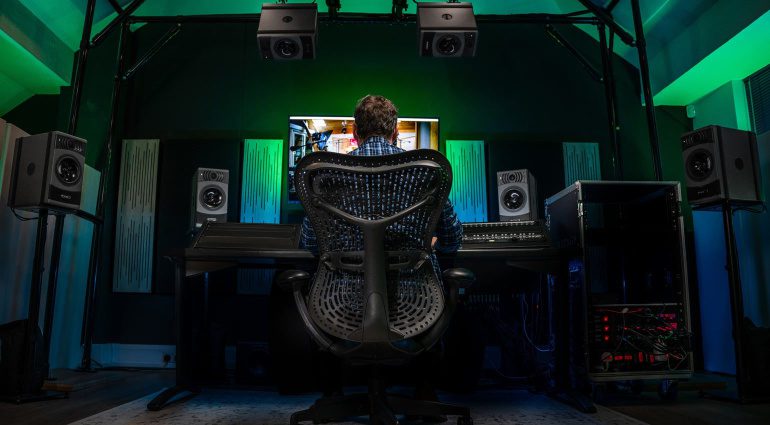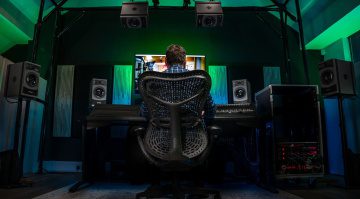Audient ORIA is a unique combination of an audio interface and monitor controller designed specifically for immersive audio applications such as Dolby Atmos. It also features a built-in SoundID Reference integration developed in collaboration with Sonarworks. Is Audient ORIA the new go-to interface for music, film, TV, game soundtracks, and VR productions? The new interface is now ready for order!
Audient ORIA: Audio Interface and Monitor Controller
Audient ORIA combines a USB-C audio interface and monitor controller for immersive audio formats like Dolby Atmos. It goes without saying that it can also handle stereo, but it’s pretty clear that the main focus is immersive audio.
ORIA features 16 outputs, which is enough to handle formats up to 9.1.6. Out of the box, the input side offers two combo inputs for microphone, line, or instrument signals, which are equipped with Audient Console microphone preamps.
However, ORIA can easily be expanded thanks to its two ADAT inputs. This also allows you to use it as a standalone monitor controller if required. Another option for adding 16 inputs is an optional AoIP (Dante) expansion card. For digital synchronization, Audient ORIA also offers Word Clock I/O.
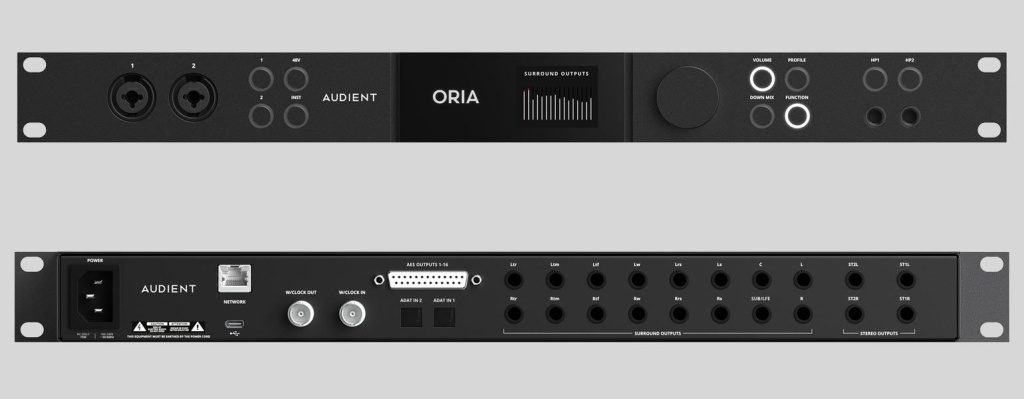
Surround outputs and immersive audio features
The output side has a bit more to offer. In addition to two relais-switched stereo line outputs, the aforementioned 16 surround outputs are available in two formats: analog and AES. Furthermore, there are two independently controllable headphone outputs.
With features like color-coded speaker groups, mute/solo for individual outputs or groups, global volume control, and global delay (lip sync), Audient ORIA promises a smooth workflow. What’s more, you can control the Dolby renderer directly from ORIA using the Down Mix button – perfect for checking your mix in a variety of formats.
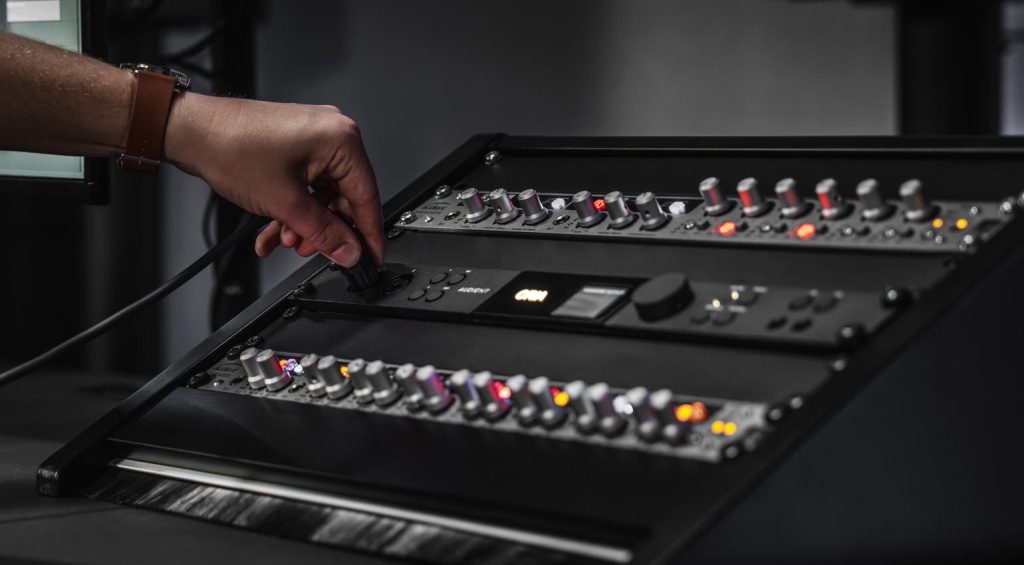
Built-in Sonarworks SoundID calibration
If you work with multi-channel speaker systems, you know that a precisely calibrated room is key. This is why Audient ORIA offers an Advanced Speaker Processing feature for quick and easy calibration, including user-defined calibration models for every listening format.
There are two ways to calibrate a room. You can either create a profile using manual measurements and settings for the 8-band EQ, speaker delay, trim, and bass management. Or you can use the automatic, software-based calibration feature.
For this, Audient has teamed up with Sonarworks to offer seamless integration into SoundID Reference. According to the manufacturer, this allows you to calibrate a multi-channel setup in less than an hour.
Audient ORIA comes with the Sonarworks Reference microphone and a 60-day free trial version of SoundID Reference for Multichannel. This allows you to create Sonarworks profiles, which can be loaded into ORIA and processed by the onboard DSP. However, you’ll need to purchase a license after the trial version expires in order to continue using your profiles.
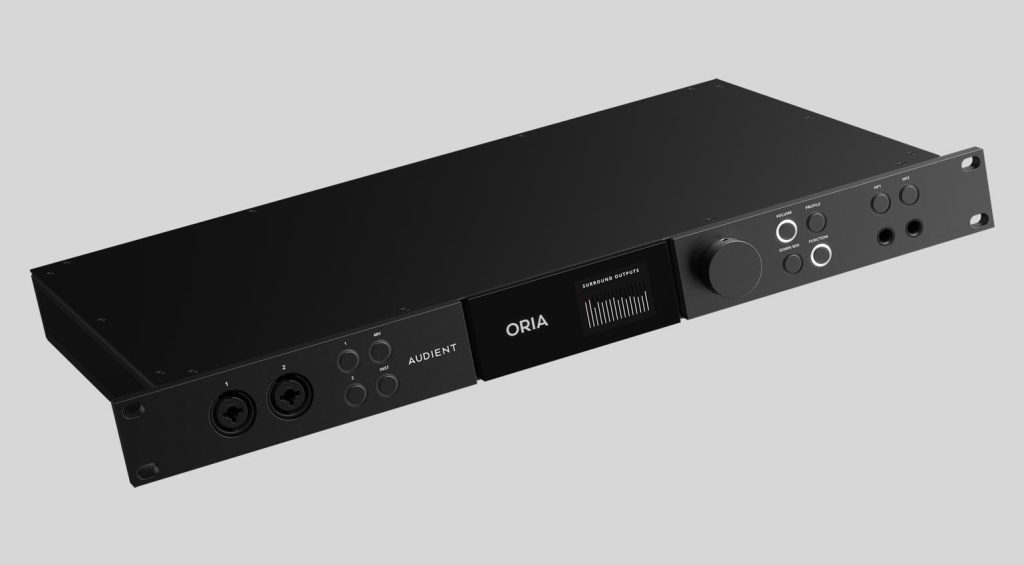
Audient ORIA Features
- Audio interface and monitor controller for immersive audio
- Supports speaker setups up to 9.1.6
- Built-in room calibration DSP
- SoundID Reference integration
- Remote control software
- 24 bit / 96 kHz
- 126 dB AD/DA
- USB 2.0 / USB-C
- 2 x 16 surround outputs (analog & AES)
- 2 x stereo line outputs (relais-switched)
- 2 independent stereo headphone outputs
- 2 x Audient Console microphone preamps (mic / D.I. / line)
- 2 x ADAT inputs
- Wordclock I/O
- ORIA Motion UI
- Optional AoIP card (Dante) for 16 input channels
- Fanless design
- iPad Remote Control App
- Includes Sonarworks SoundID Reference measurement microphone
- includes 60-day trial of SoundID Reference for Multichannel
Price and availability
You can now order Audient ORIA from Thomann* for $2599 / £2485 / €2885.
More information
More Videos about Audient ORIA
*This post contains affiliate links and/or widgets. When you buy a product via our affiliate partner, we receive a small commission that helps support what we do. Don’t worry, you pay the same price. Thanks for your support!
Image Sources:
- Audient ORIA: Plenty of outputs for immersive audio: Audient
- Audient ORIA: Audient
- Audient ORIA: Audient

